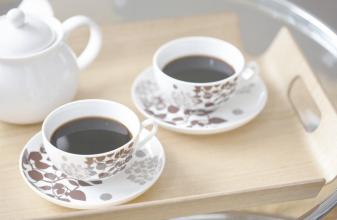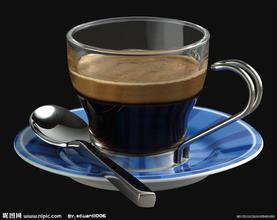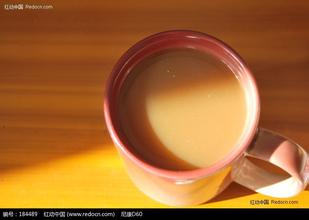Coffee fans must know the common sense of coffee
[how to get a coffee cup] Coffee that you drink after a meal is usually served in a pocket cup. The ear of this kind of cup is so small that you can't get your fingers out. But even if you use a larger cup, don't put your finger through the ear and carry the cup. The correct way to hold a coffee cup is to hold the handle of the cup by your thumb and forefinger and then pick up the cup.
[how to add sugar to coffee] when adding sugar to coffee, the sugar can be scooped out with a coffee spoon and added directly to the cup, or you can first use a sugar clip to clip the cube sugar on the near side of the coffee plate, and then add the cube sugar to the cup with a coffee spoon. If you put the cube sugar directly into the cup with a sugar clip or hand, it may sometimes spill the coffee and stain the clothes or tablecloth.
[how to use coffee spoon] Coffee spoon is specially used to stir coffee. You should take it out when drinking coffee. No longer use a coffee spoon to scoop a spoonful of coffee to drink slowly, and do not use a coffee spoon to mash the cube sugar in the cup.
[what if the coffee is too hot] the freshly brewed coffee is so hot that you can gently stir it in the cup with a coffee spoon to cool it, or wait for it to cool naturally before drinking. It is very impolite to try to cool the coffee with your mouth.
[use of cups and saucers] the cups and saucers that hold coffee are specially made. They should be placed on the front or right side of the drinker, and the cup ear should point to the right. When drinking coffee, you can hold the cup ear of the coffee in your right hand and hold the coffee plate gently in your left hand, slowly moving to your mouth and sipping. It is not advisable to hold the cup and swallow, nor should you bow your head to the coffee cup. Don't make a noise when drinking coffee. When adding coffee, do not pick up the coffee cup from the coffee plate.
[coffee and snack] sometimes you can have some snacks when drinking coffee, but don't alternate between eating and drinking with a coffee cup in one hand and a snack in the other. You should put down the snack when you drink coffee and the coffee cup when you eat it.
English words are commonly used in cafes
Flavor [flavor] is the overall impression of aroma, acidity, bitterness, sweetness and mellowness, which can be used to describe the overall feeling of contrast coffee.
Acidity [acidity] is the acidity and strong quality of all coffee grown on the plateau. Unlike bitterness or sour (sour), it has nothing to do with pH, but a refreshing and lively quality that promotes coffee to exert its functions of boosting the mind and clearing the taste.
Body [mellowness] is the taste of coffee on the tongue after drinking the prepared coffee. The change of mellowness can be as light as water to light, medium, high, fat, and even some Indonesian coffee is as thick as syrup.
Aroma [smell] Aroma refers to the smell and aroma emitted by coffee after conditioning. Bouquet is a less commonly used word that specifically refers to the taste of ground coffee powder. Aroma is usually specific and comprehensive. The words used to describe Aroma include: caramel, carbon roasted, chocolate, fruit, grass, malt, rich, rich, spicy and so on.
Bitter bitterness is a basic sense of taste, the sensory area is distributed in the base of the tongue. The bitterness of dark baking is deliberately created, but the most common cause of bitterness is too much coffee powder and too little water. Bitterness is not a consent word for sour.
Bland [light] Coffee grown in lowlands is usually quite light and tasteless. Coffee with insufficient powdered coffee and too much water will have the same light effect.
After brewing Briny [salty] coffee, if it is overheated, it will produce a salty taste. The coffee in some coffee shops has this taste.
Barista [barista]
Barista (Barista) occupation definition: a person engaged in coffee preparation, production and service. What are you engaged in? The work includes: (1) basic identification of coffee beans and blending of different flavors of coffee according to the characteristics of coffee beans; (2) using coffee equipment and coffee utensils to make coffee; (3) providing coffee services to customers; and (4) spreading coffee culture.
Espresso [espresso]
Using the mellow coffee extracted from our espresso roasted beans, espresso is usually served in a small coffee cup and is often used to blend other unique coffee drinks.
Shot [one espresso]
One ounce of espresso. Each standard espresso consists of three parts: rich gold bubble [crema], mellow taste [body] and warm heart [heart]. Gold foam refers to the caramel-colored foam on the surface of espresso, which disappears a few seconds after the espresso is brewed.
Single [single espresso]
An espresso (about 1 ounce) extracted from an espresso machine, usually served alone or steamed with mellow hot milk. Most small and medium drinks contain an espresso.
Double [double espresso]
Two single espressos are standard for large drinks. If you want your medium coffee to be stronger, you can tell the service staff to add one more espresso for you.
Espresso Con Pana [concentrated Campbell blue]
The espresso is covered with smooth whipped cream.
Espresso Macchiato [concentrated macchiato]
Espresso is marked with soft foam.
Caffe Latte [latte]
A three-stage and smooth drink: a fresh espresso, filled with hot milk, and then covered with a thin layer of milk foam to create an amazing taste. Latte Macchiato is made in much the same way as Natti, except that Macchiato must first add milk and then add coffee to "mark" it to make it smoother [Macchiato] means "mark" in Italian.
Caffe Mocha [Mocha]
A classic combination of mellow espresso and high-quality chocolate, mixed with fresh hot milk and topped with smooth whipped cream.
Cappuccino [cappuccino]
A typical Italian breakfast drink with less milk and more bubbles than Latte. Generally speaking, "dry" [dry] refers to cappuccino with more milk foam, while "wet" [wet] refers to cappuccino with more milk.
Americano [American Coffee]
The combination of mellow espresso and hot water creates a drink with a full flavor and a deep taste of espresso.
Short [small cup]
In Starbucks,Short, it refers to 8 ounces of beverages, which are best served after dinner.
All [medium cup]
Tall refers to 12 ounces (about 360ml) of drinks, which is the most popular Size.
Grande [mug]
Grande refers to a 16-ounce drink, and when you want to reward yourself, a large cup is your best choice.
Ow-fat [low fat]
For a more burden-free option, choose low-fat milk to make your own low-fat coffee.
No foam [no foam]
Don't you like the foam on the coffee sticking to your nose? You can tell the service staff that you don't want foam, so you'll only get a combination of espresso and hot milk.
Dry [with more milk foam]
It means that there are more milk bubbles than milk. If you like cappuccino, which is full of sweet milk bubbles, you can tell the service staff your needs.
With room [leave some space]
I'd like to add some milk to my American coffee or individual coffee. Please make some room for me.
Whip [whipped cream]
Whipped cream abbreviation, if you want to reduce the calories of mocha coffee, you can tell the service staff: "I don't want whipped cream" nowhip.
Drinking freshly ground coffee is obviously more beneficial to the body than liking carbonated drinks or fruit-flavored drinks with high sugar content. Coffee is definitely a favorite condiment for office workers. It's great to have a cup of coffee before you go to work or when you feel tired and sleepy because of stress. But you need to know that there are two sides to everything, even if the overall properties of an ingredient or beverage tend to be positive and don't rely too much on it. If you are also too experienced to extricate yourself from coffee control, here are five things you must know.
1. Drinking coffee on an empty stomach can also be "drunk".
It's not just alcoholic drinks, but coffee can also get you drunk. No doctor or dietitian recommends drinking coffee on an empty stomach because the gastric mucosa absorbs caffeine very quickly on an empty stomach. As a high concentration of caffeine enters the bloodstream, the heart and nervous system are stimulated, resulting in a series of reactions such as dizziness, palpitations, chest tightness, shortness of breath, night sweats and so on. Therefore, it is best to add some desserts when drinking coffee to reduce the absorption of caffeine in the stomach.
2. Drinking coffee before exercise can improve the effect of reducing fat.
Studies have shown that drinking some coffee before exercise is more likely to boost metabolism and fat burning than exercising without drinking anything at all. This is because when the caffeine in coffee is absorbed into the blood by the gastric mucosa, the body will react to stress, the concentration of fatty acids in the blood increases rapidly, and the free fat that is difficult to metabolize in the body will be consumed during exercise.
Drinking some coffee every day is good for your health
For sedentary office workers, drinking some coffee every day is definitely very beneficial to their health. Caffeine and polyphenols in coffee can increase the concentration of nitrogen oxides in the body, stimulate vasoconstriction and dilation, keep blood vessels elastic, prevent thrombosis, and maintain the health of cardio-cerebrovascular system.
4. Coffee is best to drink in the morning
After caffeine enters the body, it takes more than 7 hours to be completely metabolized, and the main role of caffeine is to accelerate lymphatic metabolism, stimulate the central nervous system and fight drowsiness, so if the quality of sleep is poor, or if you want to go to bed early, it is best to drink coffee in the morning to avoid affecting sleep quality. Of course, if you really like the mellow smell of coffee, you can choose some low-coffee or non-caffeine coffee drinks as a condiment.
5. Drinking coffee around 300ml every day is the healthiest.
Even if there are a lot of benefits, never drink too much coffee. Generally speaking, the amount of coffee you drink every day should not exceed 350ml, and it is best to keep it around 300ml. Drinking this amount of coffee drink can not only prevent health and skin problems caused by excessive caffeine intake, but also supplement sufficient amount of antioxidant polyphenols to combat the invasion of free radicals on the body and skin.

Important Notice :
前街咖啡 FrontStreet Coffee has moved to new addredd:
FrontStreet Coffee Address: 315,Donghua East Road,GuangZhou
Tel:020 38364473
- Prev

To learn coffee, first establish your own coffee knowledge system
I have paid attention to more than 20 public accounts about coffee, and I am bombarded, liked, forwarded and even saved by articles on Weixin Official Accounts every day. And then, what are we learning coffee for? We find that we have a lot to learn about coffee, but what is valuable to us? Which investments (beans, utensils, books, etc.) are useless? We choose coffee.
- Next

5 things 99% of coffee drinkers know
1. Black coffee on an empty stomach can also make you drunk. It's not just alcoholic beverages, coffee can also make you drunk. Any doctor or nutritionist definitely does not recommend drinking coffee on an empty stomach. The reason is that the gastric mucosa absorbs caffeine very quickly on an empty stomach. As high concentrations of caffeine enter the blood, the heart and nervous system will be stimulated, resulting in dizziness, palpitation, chest tightness, shortness of breath,
Related
- Beginners will see the "Coffee pull flower" guide!
- What is the difference between ice blog purified milk and ordinary milk coffee?
- Why is the Philippines the largest producer of crops in Liberia?
- For coffee extraction, should the fine powder be retained?
- How does extracted espresso fill pressed powder? How much strength does it take to press the powder?
- How to make jasmine cold extract coffee? Is the jasmine + latte good?
- Will this little toy really make the coffee taste better? How does Lily Drip affect coffee extraction?
- Will the action of slapping the filter cup also affect coffee extraction?
- What's the difference between powder-to-water ratio and powder-to-liquid ratio?
- What is the Ethiopian local species? What does it have to do with Heirloom native species?

